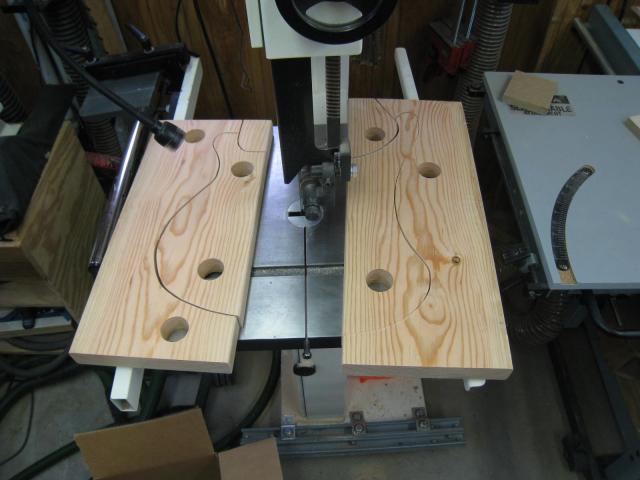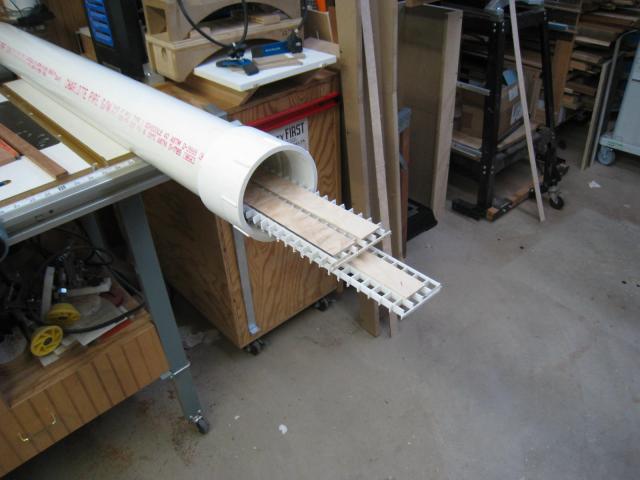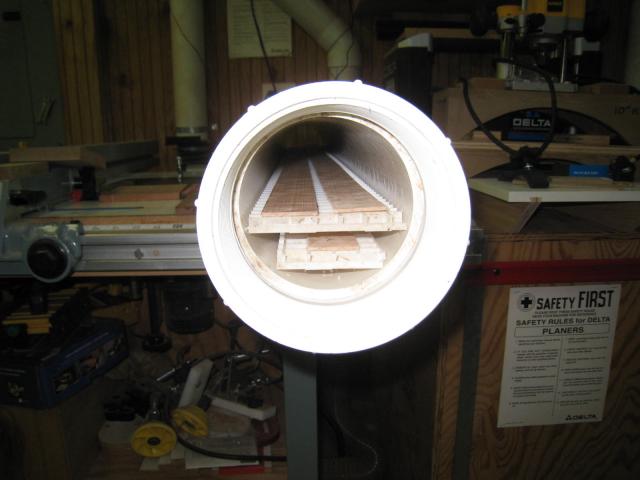I've been doing some reading up since the first run. I was surprised how many steam boxes were made of PVC. Though most were supported underneath to keep the pipe from sagging. I also found most who build wooden steam boxes sealed them very well and only drilled one hole for the drain and one small hole at the other end for the pressure to escape. All the ones I saw, PVC and wood, used dowels as a shelf to suspend the wood being steamed.
This is the piece after 24 hours in the forms. I found one place where the fibers broke around the horn. And that part of the wood was pretty saturated because it was closest to the steam inlet. As you got farther from the inlet, the wood got drier and less pliable. As you can see from the picture below, there was a lot of spring back on one end. That was the end farthest from the steam inlet.
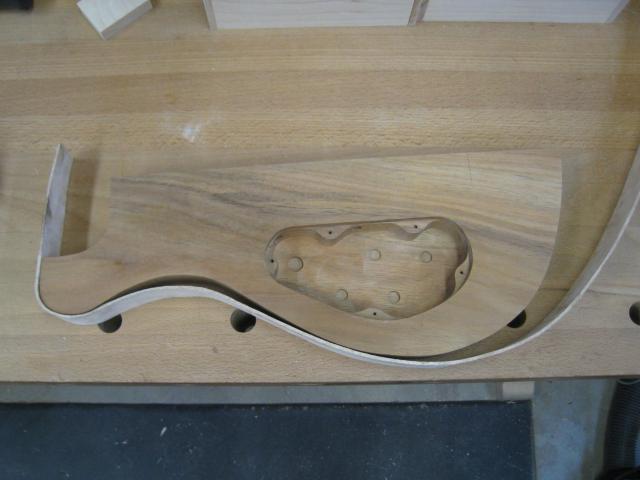
I lightly sanded some of the fibers away to make the split easier to see.
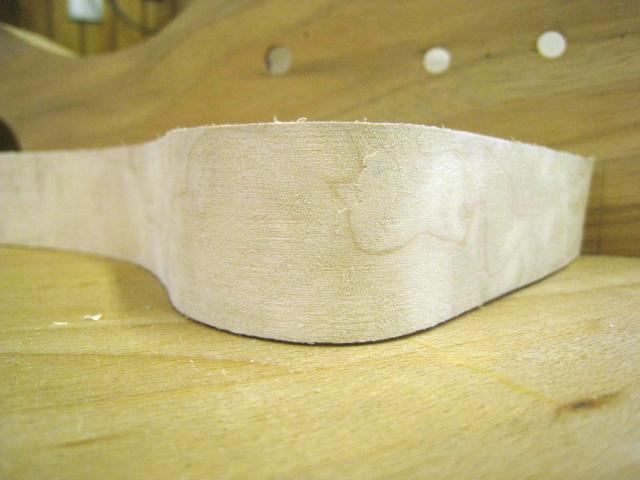
Like George said, overbend. Even with clamps pressing things into place, there are gaps. I'll need to fix these with a bending iron. My goal is for the strip of maple to hug the curves of the body.
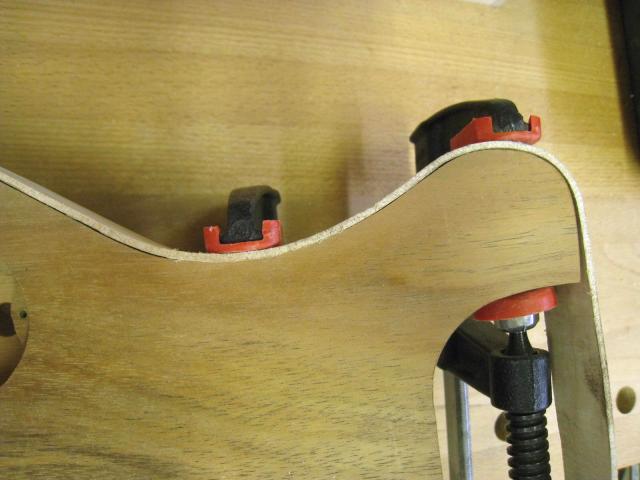
I have a book by Jonathan Kinkead on making an acoustic guitar. From what I read, it seems he soaks the wood in water then takes it to the bending iron. He places a wet rag on the inside (between the wood and iron) and a bending strap on the outside. Is this what you guys do?





 Reply With Quote
Reply With Quote